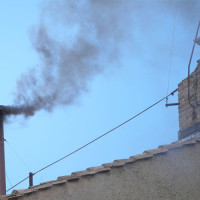- Friday, 9 May 2025
Jud-Sheetal festival celebrated in Mithila
By Binay Karna,Saptari, Apr. 16: Jud-Sheetal, one of the many cultural festivals observed in the Mithila region, was celebrated on Tuesday with traditional rituals and a strong emphasis on nature conservation. Also known as Bais Paavni and Siruwa, the festival takes place every year on the second day of Nepali New Year.
The celebration begins a day earlier, on April 14, with Satuain—a day when people eat Satu (roasted gram flour). On the main day of Jud-Sheetal, the eldest members of the household pour water on the heads of younger family and community members, offering blessings for peace and coolness. The younger ones then bow and touch their elders’ feet to receive these blessings.
According to Dhirendra Premarshi, an expert on Mithila culture, the festival symbolises harmony with nature. Water is sprinkled not only on people, but also on domestic animals, trees, plants, and everyday household items such as cupboards, beds, chairs, brooms, grinding stones, roads, and tools—anything used in daily life. This symbolic act of cleansing and cooling represents renewal and respect for the environment.
Premarshi explains that with the start of the New Year and increasing heat in April, this ritual expresses a collective wish for coolness and wellbeing—for both humans and nature. Even stoves remain unlit on this day, reflecting a pause from daily routine and a gesture of balance with nature.
People also visit the resting places of deceased loved ones to offer water, symbolising peace in both life and death. In ancient times, the festival was also marked by the repair and cleaning of wells and water sources, though such practices have declined over time.
Another old custom was thalkado—splashing mud on each other’s bodies, which not only provided a playful moment of coolness but also helped clean ponds and other communal water bodies. This, too, has largely disappeared in modern times.
Traditional foods of Jud-Sheetal
Food plays a central role in the celebration. On Satuain, dishes like Puri, Bari (fried lentil balls), and various Taruwa (vegetable fritters) are prepared and consumed the next day. This is why the day is also known as Bais Paavni, meaning “day of leftovers.” These cooled foods align with the festival’s message of calmness and relief from heat.
Essential dishes include green mango fritters, mango chutney, and curry made from Sajivan (moringa). In fact, the festival is believed to mark the beginning of mango season in Mithila.
Premarshi notes that in earlier times, people would visit their neighbours’ homes and eat a little from each household. This tradition of communal sharing has declined due to the rise of nuclear families, the influence of technology, and the lasting impact of the COVID-19 pandemic.




-square-thumb.jpg)











